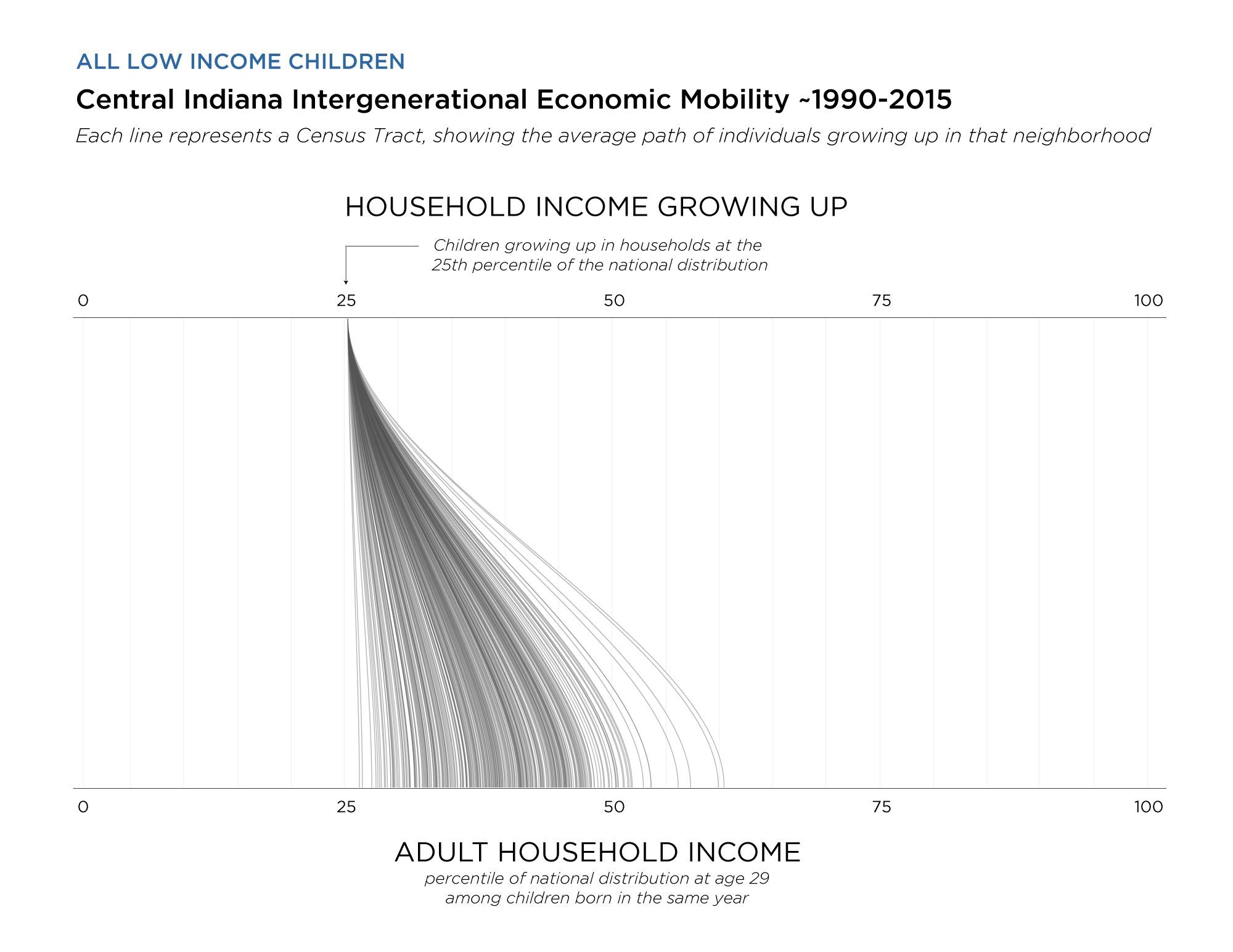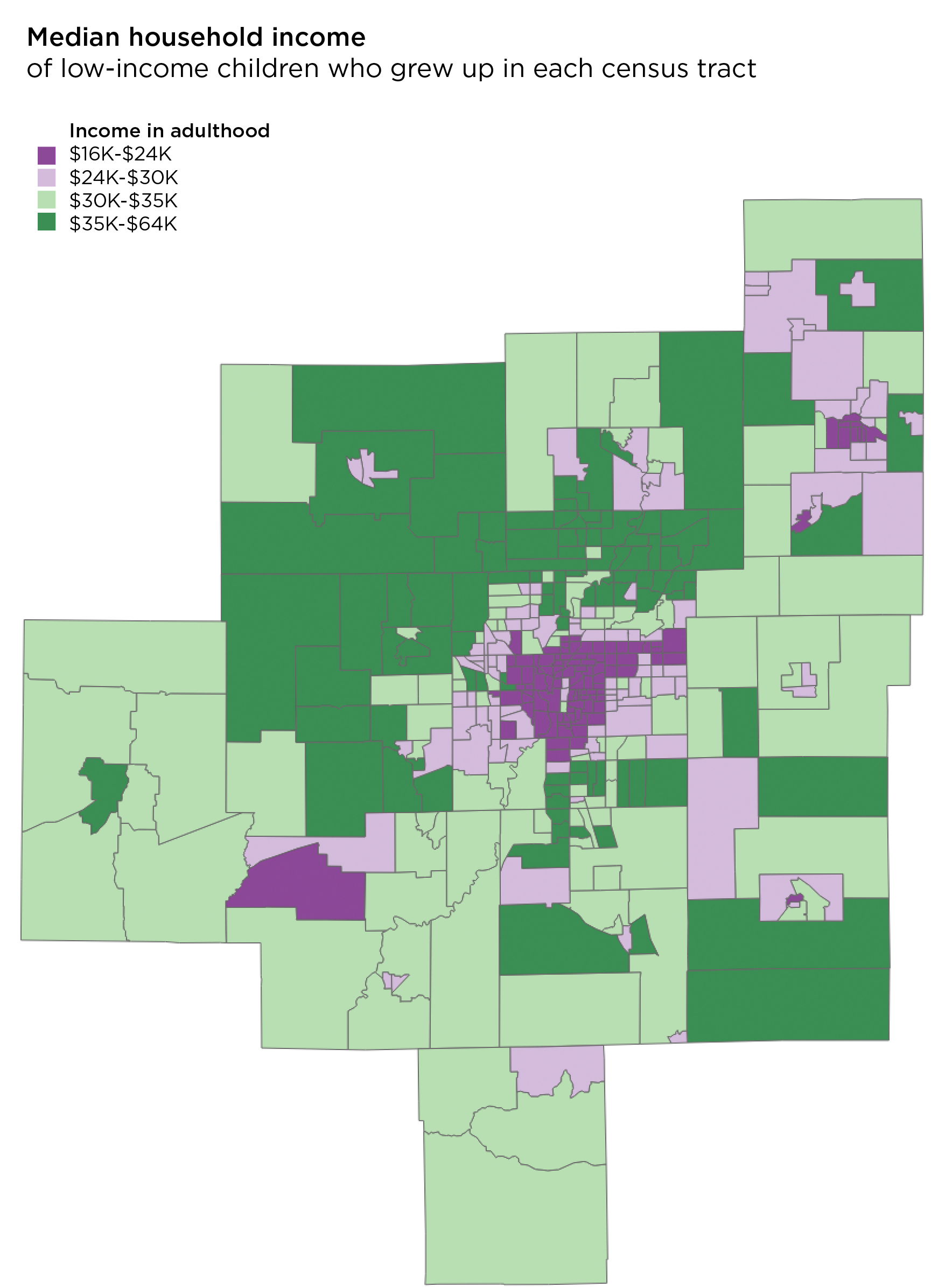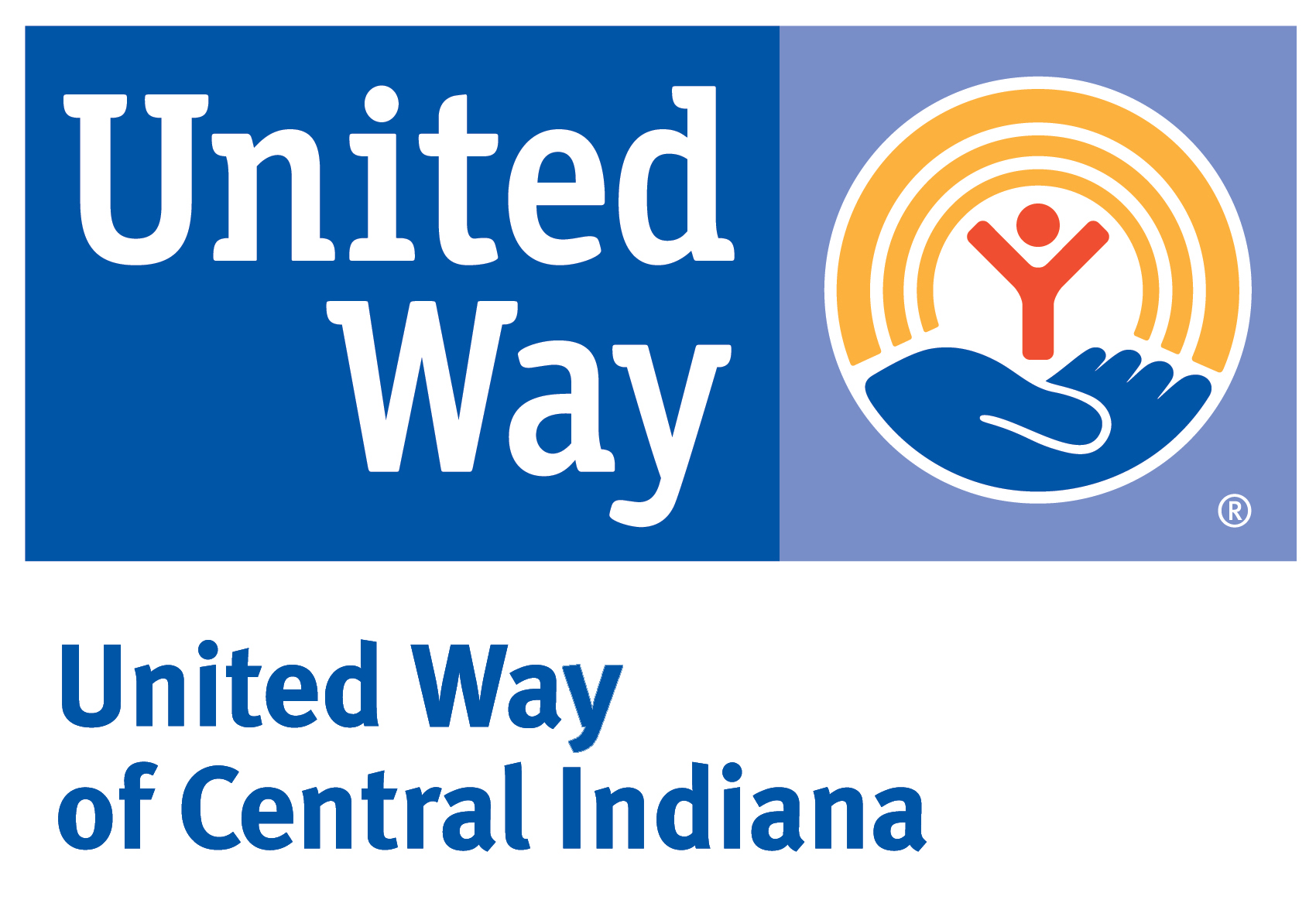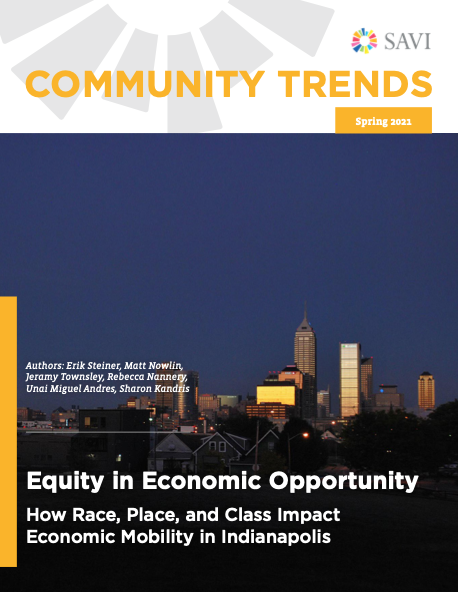Equity in Economic Opportunity
SAVI Talks - March 25, 2021Building on research by Harvard’s Raj Chetty and his team, we are developing new insights and highlighting findings about opportunity in Indianapolis neighborhoods. The average child born into a high-income family in Indianapolis earned $50,000 in household income when they were about 35. Children born to low-income families grew up to earn $27,000.
- Indianapolis’ level of opportunity for low-income children is lower than all but two of the largest U.S. cities. Only Atlanta and Charlotte have worse outcomes than Indianapolis.
- The average Black child born in Indianapolis earns $9,000 less than the average White child. There is a spatial disparity too: In many neighborhoods, children who grew up there earn less than $20,000 per year. In other neighborhoods, children born at the same income level grow up to earn $35,000 or more.
- Neighborhoods that are segregated clearly have lower opportunity outcomes for children. People born into Redlined neighborhoods have less economic opportunity, even when controlling for their parents’ income.


Articles and Story Maps
Explore other research and interactive content we have developed around equity.
Where You Live Matters: Exploring Community Health and Risk Factors in Central Indiana
Where You Live Matters | March 2025Exploring Community Health and Risk Factors in Central IndianaS M Asger Ali, Ally Scott, Jay Colbert, and Sharon KandrisWhat You'll Find in This ReportData About: Health outcomes such as: Life Expectancy Leading Causes of Death ...
Protected: IndyEast Promise Neighborhood – A Comparative Analysis
Password Protected
To view this protected post, enter the password below:
Indianapolis Racial Equity Report Card
We are pleased to announce the launch of this baseline equity report designed to highlight racial disparities and inequities across multiple sectors Indianapolis. The Indianapolis Racial Equity report card presents over 30 indicators that describe the state of equity...
Indianapolis Metropolitan Police Dept. Use of Force Report
When officers respond to emergencies that put them and the public in high-stress environments, they must make quick decisions that are in the best interests of everyone involved. Officers must rely on training, morale, and guidance from their agencies to determine the...
Understanding Context for Ministry: Urban, Suburban, Rural
Understanding Context for Ministry: Urban, Suburban, Rural Indiana has a population of approximately 6.7 million people. Of those, 1.6 million live in urban areas, 2 million live in rural areas, and 3.1 million live in suburban areas. Although public imagination...
Empowering Indiana Communities with Evictions & Foreclosure Data
More than 3.5 million U.S. households are threatened with eviction each year, a poignant illustration of rising housing costs. And, evictions have been rising steadily across Indiana since the end of COVID-19 eviction protections. The causes of eviction can be...
Empowering Indiana Communities with Evictions & Foreclosure Data
More than 3.5 million U.S. households are threatened with eviction each year, a poignant illustration of rising housing costs. The causes of eviction can be complex, following a synergy of poverty and low wages, rising rent costs, inflation, and drug and mental health...
Lead exposure in the Indy East Promise Neighborhood
Lead exposure in the Indy East Promise NeighborhoodSpecial thanks to the Marion County Public Health Department for supplying child blood lead data for analysis. A summary of the adverse effects of childhood lead exposure, inequities relative to the rest of Marion...
How is Indianapolis Doing?
A monthly look at how the Indianapolis metro area is recovering and emerging from the Covid-19 pandemic
Quantifying the effects of lead exposure on children’s futures
At the August 24 Data & Drafts event, cosponsored by IndyPL, WFYI Public Media, and Bier Brewery, we presented findings from our analysis of the state of childhood blood levels in Marion County. We looked at childhood lead exposure in Marion County, its impacts,...
Authors
Sharon Kandris
Associate Director,
The Polis Center
Jay Colbert,
Data Manager,
The Polis Center
Jeramy Townsley,
Visiting Research Analyst,
The Polis Center
Matt Nowlin,
Research Analyst,
The Polis Center
SAVI Talks Panelists
Patrice Duckett
Exec. Director
Fay Biccard Glick Crooked Creek Neighborhood Center
Amy Nelson
Exec. Director
Fair Housing Center of Central Indiana
Pamela Ross
VP of Opportunity, Equity & Inclusion
Central Indiana Community Foundation
SAVI Talks Moderator
Jill Sheridan
Health & Science Reporter
Indiana Public Broadcasting, WFYI
Event Partners





